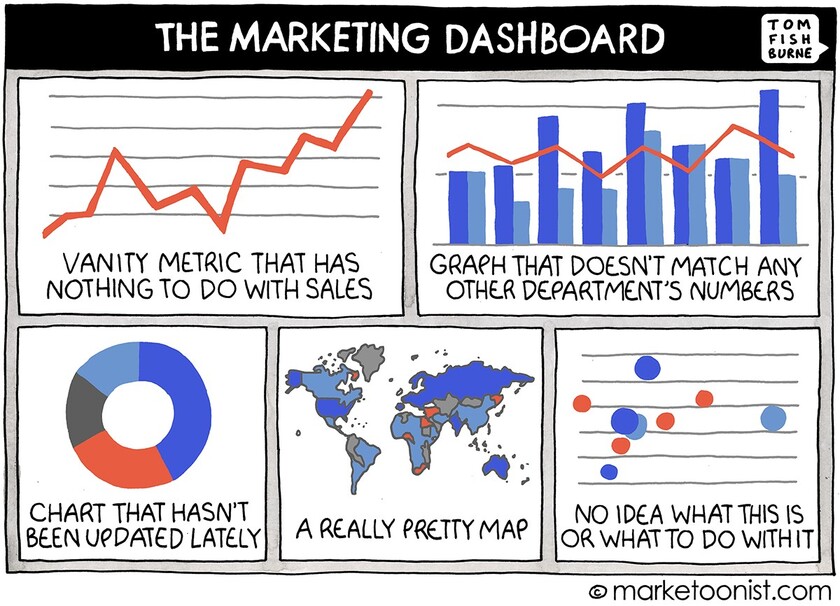Performance metrics are essential tools that businesses and organizations use to measure progress and track their success. These metrics provide valuable insight into how well a business is performing, which areas require improvement, and where opportunities for growth exist.
There are numerous performance metrics available, each serving a specific purpose. While important to track, not all fit the strict definition of a KPI.
Revenue Metrics
Revenue metrics are crucial for businesses because they measure the overall financial health of the organization. Gross revenue is the total amount of money earned by a business, while net revenue is the revenue after all expenses have been deducted. Profit margins indicate the percentage of revenue left after all expenses have been paid, while average revenue per user (ARPU) measures how much revenue each customer generates on average.
By measuring these metrics, businesses can understand where their revenue is coming from, identify their most profitable products or services, and develop strategies to increase revenue. Additionally, revenue metrics can help businesses monitor their cash flow, assess the success of marketing and sales efforts, and make informed decisions about pricing and cost management.
Customer Metrics
Customer metrics are critical in understanding customer satisfaction and loyalty. Customer satisfaction metrics include customer surveys, customer feedback, and Net Promoter Score (NPS), which measures how likely customers are to recommend a business to others. Customer retention metrics measure the percentage of customers who return to a business, while customer lifetime value (CLTV) calculates the total revenue a customer generates over the course of their relationship with a business. Finally, customer acquisition cost (CAC) measures how much it costs to acquire a new customer.
By measuring customer metrics, businesses can identify areas where they need to improve customer service, assess the effectiveness of marketing and sales efforts, and develop strategies to increase customer loyalty and retention. High customer satisfaction, retention, and CLTV are key indicators of a successful business.
Marketing Metrics
Marketing metrics help businesses understand how well their marketing campaigns are performing. Conversion rates measure the percentage of website visitors who take a specific action, such as making a purchase or filling out a form. Click-through rates (CTR) measure the percentage of people who click on an ad or email link, while engagement rates measure the percentage of people who engage with social media content. Cost-per-click (CPC) measures the cost of each click on a specific ad or campaign.
By measuring these metrics, businesses can assess the effectiveness of their marketing campaigns, identify areas where campaigns are underperforming, and make data-driven decisions about how to optimize campaigns for better results.
Operational Metrics
Operational metrics are key to measuring the efficiency and productivity of a business. Cycle time measures how long it takes to complete a task or process, while lead time measures the time between the start and finish of a project. Throughput measures the amount of work completed in a given time period.
By measuring these metrics, businesses can identify bottlenecks in their operations, optimize processes for better efficiency, reduce costs, and improve productivity.
Employee Metrics
Employee metrics help businesses understand how well their employees are performing. Employee satisfaction metrics include employee surveys and feedback, while employee turnover rate measures the percentage of employees who leave the company over a specific period. Employee productivity measures how much work an employee completes in a given time period.
By measuring employee metrics, businesses can identify areas where employee morale is low, address any issues that may be impacting employee performance, and develop strategies to increase productivity and reduce turnover.
Financial Metrics
Financial metrics are essential for understanding the financial health of a business. The debt-to-equity ratio measures the amount of debt a business has compared to equity, while the return on investment (ROI) measures the return a business generates on its investments. The cash flow statement tracks the inflow and outflow of cash from a business.
By measuring these metrics, businesses can determine how financially stable they are, identify areas where they may need to cut costs or invest more money, and make informed decisions about financial planning and budgeting.
Social Media Metrics
Social media metrics are key to measuring the success of a business’s social media strategies. Likes, shares, comments and followers are metrics that measure the engagement and reach on social media platforms. Social media analytics tools also provide insights on demographics, peak engagement times, and the types of content that perform best.
By measuring social media metrics, businesses can assess the effectiveness of their social media marketing strategies, identify opportunities for growth, and optimize their content and advertising for better engagement and conversion rates
Overall, performance metrics are critical for businesses to track and measure success. By measuring and analyzing these metrics, businesses can identify areas for improvement, develop strategies to increase revenue, improve customer satisfaction and loyalty, optimize marketing and operational efficiency, and make informed financial decisions.
It’s important to note that while these metrics provide valuable insights, they should not be viewed in isolation. For example, a high revenue metric may not necessarily indicate profitability if costs are also high. It’s important to consider multiple metrics in relation to each other to gain a complete picture of business performance.
In conclusion, businesses should regularly measure and analyze their performance metrics to assess their overall success and identify opportunities for growth and improvement. With the help of these metrics, businesses can make data-driven decisions that drive success and achieve their goals.






